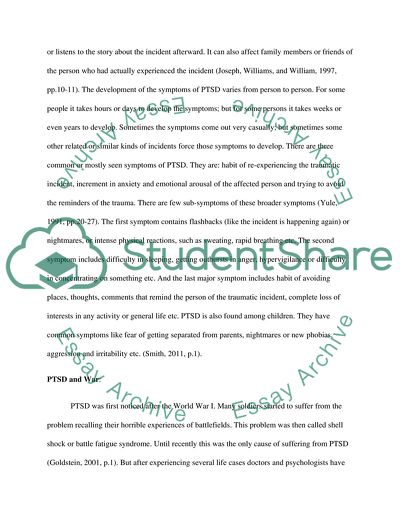Cite this document
(The Development of the Symptoms of Post Traumatic Stress Disorder: Literature review, n.d.)
The Development of the Symptoms of Post Traumatic Stress Disorder: Literature review. Retrieved from https://studentshare.org/medical-science/1763935-brief-analysis-of-post-traumatic-stress-disorder-brief-analysis-of-civil-war-in-yugoslavija-1991-brief-analysis-of-documentary-video-techniques
The Development of the Symptoms of Post Traumatic Stress Disorder: Literature review. Retrieved from https://studentshare.org/medical-science/1763935-brief-analysis-of-post-traumatic-stress-disorder-brief-analysis-of-civil-war-in-yugoslavija-1991-brief-analysis-of-documentary-video-techniques
(The Development of the Symptoms of Post Traumatic Stress Disorder: Literature Review)
The Development of the Symptoms of Post Traumatic Stress Disorder: Literature Review. https://studentshare.org/medical-science/1763935-brief-analysis-of-post-traumatic-stress-disorder-brief-analysis-of-civil-war-in-yugoslavija-1991-brief-analysis-of-documentary-video-techniques.
The Development of the Symptoms of Post Traumatic Stress Disorder: Literature Review. https://studentshare.org/medical-science/1763935-brief-analysis-of-post-traumatic-stress-disorder-brief-analysis-of-civil-war-in-yugoslavija-1991-brief-analysis-of-documentary-video-techniques.
“The Development of the Symptoms of Post Traumatic Stress Disorder: Literature Review”, n.d. https://studentshare.org/medical-science/1763935-brief-analysis-of-post-traumatic-stress-disorder-brief-analysis-of-civil-war-in-yugoslavija-1991-brief-analysis-of-documentary-video-techniques.


